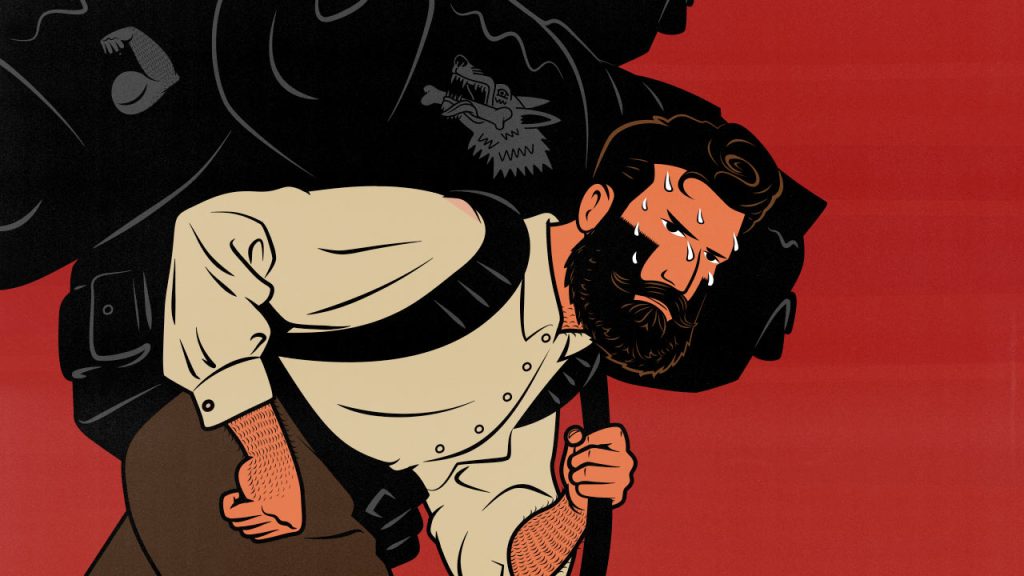
How to Ruck—The Complete Beginner Guide
Rucking is walking with a loaded backpack, also known as a “rucksack,” hence the term “rucking.” The term comes from military training, but its origins go back far further. We’ve been carrying heavy loads over long distances throughout all of human history.
Hunter-gatherers carried spears and shields and baskets full of forage. Men would lug large game home after successful hunts. Women would carry their young children strapped to their backs. We’ve always been rucking, just without the rucksacks.
Rucking is still popular. It remains one of the best ways to improve cardiovascular fitness and muscular endurance. Here’s our beginner guide explaining how to do it.
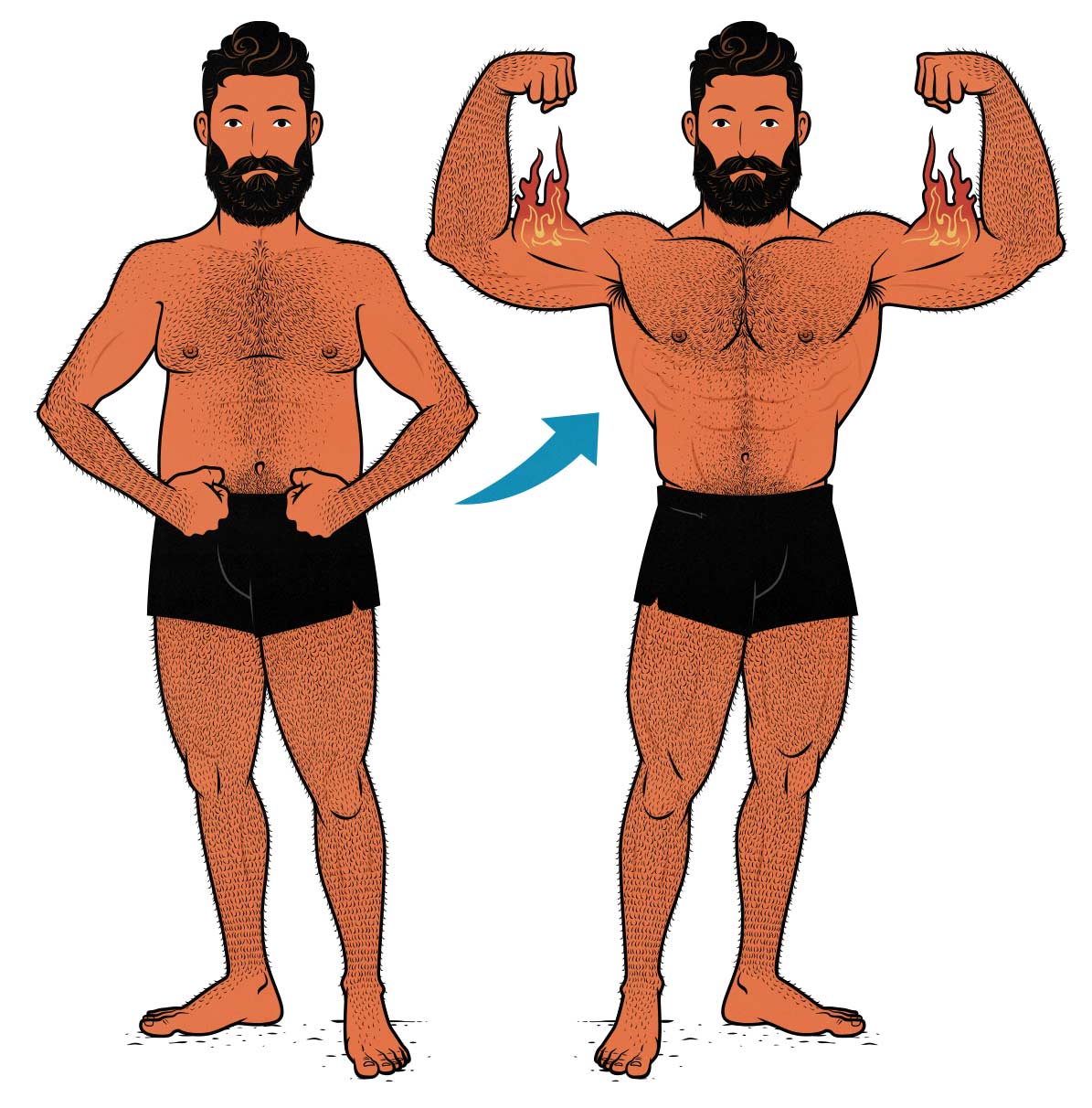
What’s Rucking?
Rucking is loaded walking. It’s when you go out on a march or a hike with a weighted backpack or “rucksack.” It’s a form of exercise that combines cardiorespiratory training with strength and endurance conditioning.
Rucking originated among the Iron Armies, where ancient warriors would train by marching long distances in their arms and armour, carrying their supplies and sustenance on their backs. It’s remained a popular form of exercise for thousands of years, given how simple, enjoyable, and effective it is.
The History of Rucking
Some historians begin 5,000 years ago, with the remains of Ötzi the Iceman, a Bronze-Age barbarian. He was carrying something on his back when he was murdered in the Ötztal Alps, between the modern borders of Italy and Austria. Perhaps he carried his belongings in a heavy rucksack. Maybe it was a pair of snowshoes. Either way, he appears to have been travelling, not exercising.
Rucking as a form of exercise began in the Iron Age (1200–550 BC). Ancient Roman soldiers would condition themselves by going on 5-hour, 20-mile hikes while carrying 45 pounds. Macedonian warriors trained by going on day-long, 40-mile treks while carrying up to 80 pounds. Meanwhile, at the other end of the Silk Road, Chinese soldiers went on long training marches in full armour, carrying their full kits, including heavy crossbows (study).

The word “rucksack” comes from 19th-century Germany, giving birth to the term “rucking.” During the First and Second World Wars, the British Army made these rucksacks sturdier to help their soldiers carry greater loads more easily.
Rucking loads have remained relatively constant throughout history. Soldiers routinely carry up to 30% of their body weight, train with up to 45%, and are occasionally forced to carry even more. This usually means carrying somewhere between 45–90 pounds.
The Purpose of Rucking
The best way to think about rucking is as a progression to walking. Walking is great, but it can quickly become too easy to provoke an adaptation. Once you can walk briskly for an hour without much challenge, you may want to think about how to make it harder.
There are a few ways to progressively overload walking:
- Pick up the pace, going on jogs. I’ve taken up jogging this year, and I love it, but it isn’t for everyone. It has a fairly steep learning curve, and the repeated impact of running on hard surfaces can be hard to recover from.
- Walk on an incline. Bodybuilders are famous for doing their cardio on incline treadmills. However, that doesn’t have the same primeval appeal as questing through nature at sunrise or the intrigue of sneaking through the city at night.
- Walk with a heavier load—rucking. This is the easiest and most accessible way to progressively overload walking, and it has very few downsides. Plus, it’s good for strengthening your postural muscles and bones. I think it makes for a great default.
The Benefits of Rucking
The main benefit of rucking is that it’s a form of vigorous “Zone 2” exercise (study). It’s usually listed at about 7 Metabolic Equivalents (METs), meaning it’s about 7 times as metabolically demanding as sitting quietly (study). That puts it on par with jogging, making rucking one of the most effective forms of cardio for improving cardiorespiratory fitness.
Rucking has a few more benefits, too:
- Having a high daily step count is strongly associated with improved health and a longer lifespan, reducing the chance of dying from any cause (meta-analysis).
- Rucking is safer and easier to recover from than many other forms of cardio. For example, the impact on your feet, shins, and knees is about 3x gentler with rucking than with jogging.
- It’s easy to ruck with other people. Everyone can load their packs with the appropriate amount of weight (or no weight at all).
- Rucking will strengthen your postural muscles, helping you stand taller and straighter.
- Everyone already knows how to walk. There’s no learning curve to overcome.
- Many people prefer rucking to jogging.
Rucking also complements weight training quite well. The posture you build from lifting will help with rucking. The strength you gain from lifting will help you ruck with heavier loads. The cardiovascular fitness you develop from rucking will help you recover faster between weight training sets and workouts.
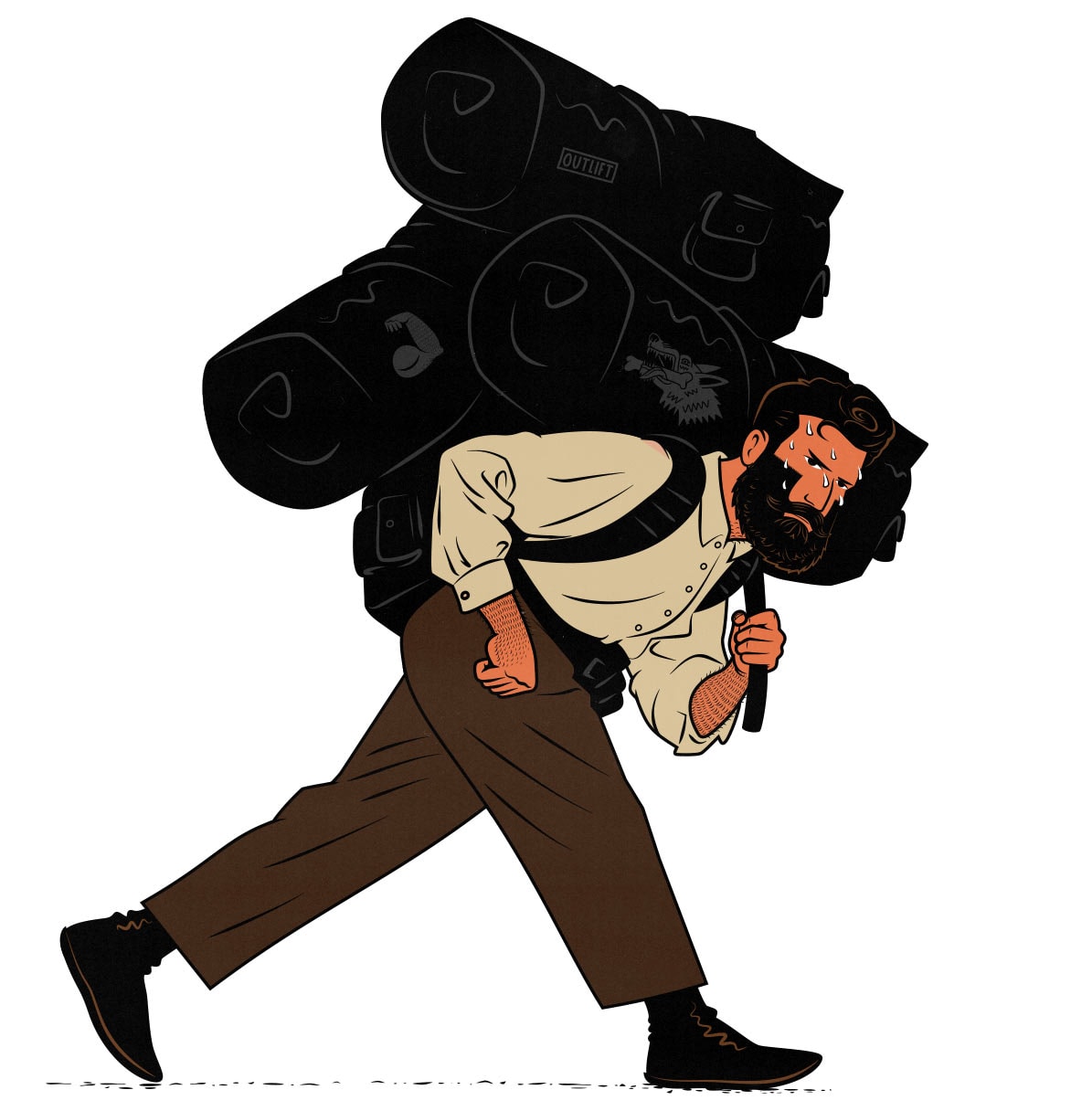
How to Ruck
How to Start Rucking
Start by mastering walking. For many beginners, walking is challenging enough to count as moderate-intensity exercise. Start by going on 30–60 minute walks, keeping a quick pace, as if you’re running late for a date with someone who enjoys the smell of sweat.
When brisk walking becomes too easy, toss on a backpack. You could get a special rucksack or simply load up a regular backpack with books or bricks. Add more weight as you grow fitter, just like you’d load a barbell heavier as you grow stronger.
How Much Weight to Carry
Throughout history, men have routinely carried around 45 pounds over long distances. That’s the weight of a 4-year-old child, a bushel of gooseberries, or a suit of armour with your choice of weapon.
Soldiers will often carry even greater loads. During the Second World War, soldiers were laden with up to 90 pounds. In Afghanistan, infantry would carry nearly 100 pounds. Special forces will sometimes ruck with up to 125 pounds.
However, military loads aren’t selected because they’re ideal for health or fitness. Rather, soldiers train to carry the equipment they need to survive in combat. Many of the military guys I spoke with remember rucking as the miserable thing that beat up their knees but kept them alive. Almost all of them recommend being more conservative when rucking for exercise.
If you’re rucking to improve your strength and fitness, start with 5–10% of your body weight, and gradually work your way up to 1/3 of your body weight. So, if you weigh 180 pounds, start with 15 pounds and work your way up to 60 pounds.
Whenever a load feels manageable, increase it by a few pounds. Whenever your breathing feels too comfortable, pick up the pace.
How to Ruck With Good Technique
Rucking is similar to walking. Stand tall, head high, with a strong posture. Don’t shrug your shoulders up or clench them forward. To a casual observer, it should look like you’re a normal person carrying a regular backpack. It’s only when they look closer that they should notice your pained expression, troubled breathing, and beads of sweat running down your face.
Take short, frequent steps. To keep the impact on your joints more manageable, keep your weight underneath you. Don’t think of yourself like a cheetah bounding across the savannah. Instead, imagine yourself like a rat scurrying across the floor, taking a flurry of quicker, smaller, lighter steps. When you pick up the pace, don’t reach further with your feet. Instead, march with a faster tempo.
Breathe through your nose most of the time. If you need to breathe through your mouth, consider lightening the load or slowing the pace. If you’re never tempted to breathe through your mouth, consider adding weight or picking up the pace.
If you’re slouching or trudging, you’ve been going too long, or the load is too heavy. When you can’t maintain proper posture or gait, it’s time to take a break or call it a day.
If you start overheating, fold up the front of your shirt to let your stomach breathe. As your belly sweat evaporates, you’ll feel a new surge of energy. I’m not sure how common this is internationally. This may only be a thing in Mexico.
Carry water and a salty snack with you, such as trail mix, especially when going on longer rucks.
How Often to Ruck
Your goal is to do at least 150 minutes of moderate-intensity cardio or at least 75 minutes of vigorous-intensity cardio every week (reference). That’s enough to get you well into the realm of diminishing returns, though doing still more will give you even greater benefits. Rucking counts as vigorous exercise.
- If rucking is your main form of cardio, a good default is to go for 30–45 minutes 3–4x per week. It’s easiest to improve your fitness when you do cardio a few times per week. Rucking is no exception.
- Longer rucks are popular. I like to ruck once or sometimes twice per week, heading out for a good couple of hours. This works best if you do other forms of physical activity on the other days of the week.
- To get an Expert Infantry Badge, you’d need to carry 70 pounds for 12 miles in under 3 hours. This can make for a good lifetime goal or yearly challenge.
When to Ruck
If you can, ruck in the morning. The heat won’t be as oppressive, people won’t mistake you for a raincloud, and seeing sunlight earlier in the day is good for your sleep. But there’s nothing wrong with rucking at any time of day.
If you lift weights, you might want to go rucking the day after the workout that’s hardest on your legs and lower back. For example, if you deadlift on Friday, you might want to ruck on Saturday. That way, rucking will help you actively recover from your workouts instead of interfering with them.
Where to Ruck
The most idyllic way to ruck is to head out into nature for a hike with a heavy rucksack, some water, and some trail mix. You’d navigate treacherous mountain paths, rest when you need to, and keep an eye out for bears, jaguars, mountain snakes, or whatever lurks in the shadows of your biome.

Most people ruck near their homes. I start rucking at my front door and walk to the nicest place I have time to get to. Sometimes, that’s walking with my wife and son to get some ice cream. Other times, I go a few kilometres to the beach, where I can take off my shoes and walk in the sand.
I recently bought a GoRuck bag with a laptop compartment. That lets me ruck 20 minutes to a nearby cafe, work for an hour or two, and then head back home. Some guys ruck to and from the gym.
How to Prevent Blisters
The most common rucking injury is blisters. If you get used to walking before you start rucking, you should be okay. Your feet will adapt to the socks and shoes you wear. As you walk for longer, your feet will get stronger.
You also need to keep your feet dry. You need socks that breathe well enough to let your sweat escape. I recommend Merino wool.
What Muscles Does Rucking Work?
Rucking works most of the muscles in your body, from the muscles in your feet all the way up to your neck. You’ll probably feel it the most in your upper traps. If your upper traps are limiting you, forcing you to stop rucking before you’ve got a good cardio workout in, you might want to start with a lighter weight and work your way up.
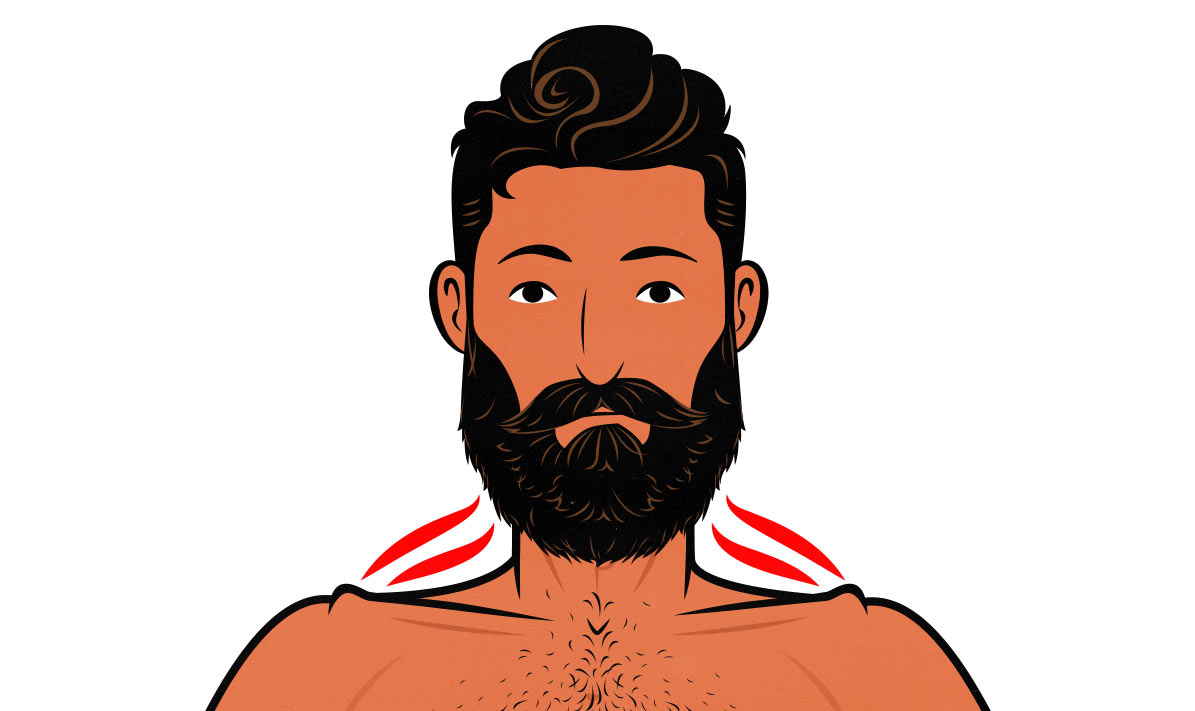
Rucking is mainly done to improve cardiovascular fitness, but it can also be good for developing muscular endurance, especially in your feet, shins, core, and upper back. If you’re specifically trying to build muscle, though, then look to hypertrophy training.
How Many Calories Does Rucking Burn?
The US military found that a 180-pound man burns 180–220 calories per mile (110–140 kcal/km), depending on how much weight he’s carrying:
| Weight | Per Mile |
|---|---|
| 35 pounds | 184 calories |
| 50 pounds | 199 calories |
| 70 pounds | 222 calories |
Once you’re conditioned for it, you should be able to cover about 4 miles (6.4 km) per hour, burning somewhere in the neighbourhood of 700–900 calories (reference):
| Hours | 35-lb Ruck | 50-lb Ruck | 70-lb Ruck |
|---|---|---|---|
| 1 hour | 735 calories | 795 calories | 887 calories |
| 2 hours | 1470 calories | 1590 calories | 1774 calories |
| 3 hours | 2205 calories | 2385 calories | 2661 calories |
Keep in mind that a 180-pound man burns around 100–150 calories per hour merely by being alive. Still, rucking is burning another 600–700 calories on top of that. That’s far more calories than you’d burn walking. It’s more similar to what you’d burn jogging (per hour).
Frequently Asked Questions
What Rucksack Should You Buy?
You can use any backpack, especially if you’re just getting started. Most can hold 10–20 pounds, and when there’s so little weight in them, it doesn’t much matter if the fabric is flimsy or the straps dig into your shoulders.
As you get stronger, you should upgrade to a proper rucksack. Anything designed for hiking or the military will serve you fine, but I think it pays to get a good one. I used my first rucksack for 20 years. These can be lifetime purchases.
We’re affiliated with GoRuck. I think they make the best rucksacks. Most people who are into rucking agree. Almost everyone I talk to about rucking loves GoRuck. Their bags are comfortable, practical, pleasantly minimalist, and built like tanks.
- The standard Rucker is a good default. It’s compact, sleek, and sturdy. It holds 2 weight plates, has a little bit of extra space for supplies, and can easily handle over a hundred pounds.
- I have a 26L GR2. It’s good for rucking, hiking, and also travelling. It holds a weight plate and a sand kettlebell, has a fortified laptop compartment, and leaves plenty of room for books, shoes, snacks, water, and whatever else.
What Should You Use for Weight?
You can use almost anything as weight. 20 years ago, I would load my rucksack full of textbooks and speculative fiction novels. It worked, but it was a pain, and my books suffered for it.
There are a few popular ways to load a rucksack:
- Bricks duct-taped together. As you grow stronger, you add more bricks.
- Sandbags. As you grow stronger, you add more sand to the bags.
- Weights. Dumbbells, weight plates, or whatever you have.
You can also buy flat, rectangular, cast-iron plates made specifically for rucking. They’re compact, comfortable, and allow you to fill up the rest of your bag with other things. (Most companies won’t ship weights internationally, so if you live outside of the US, check Amazon for “rucking weight plates.”)
I pair one of those 30-pound weight plates with a 40-pound sand kettlebell. The sand kettlebells are especially handy while you’re gradually adding weight:
- Start with 10 pounds of sand and gradually work your way up to 30.
- When you get to 30 pounds of sand, swap it out for a 30-pound weight plate.
- Gradually fill the sandbag up again, eventually reaching 70 pounds of combined weight.
Can You Jog With a Rucksack?
You can run with a loaded rucksack, and soldiers often have to, but you probably shouldn’t. The impact of jogging can already be hard on your feet, shins, and knees. That isn’t a bad thing. It’s one of the benefits of jogging. Your bones and joints adapt to the impact, growing denser, tougher, and stronger. But the stress of running with a loaded rucksack can be excessive.
If you want to run, run without any added weight. If you want to ruck, walk briskly with up to 1/3 of your body weight.
Should You Ruck With a Hip Belt?
Rucking with a hip belt shifts the weight down to your hips, reducing the load you need to carry with your upper body. This makes your rucksack feel much lighter. It makes rucking easier. In the military, it can be a lifesafer.
If you’re rucking for exercise, you probably don’t need to reduce the demands on your upper body. You may prefer to bear more of the burden with your back. However, there’s nothing wrong with using a hip belt if you prefer it.
Should You Ruck With a Chest/Sternum Strap?
Sternum straps cinch the rucksack across your chest, keeping it more firmly in place. Sternum straps aren’t very popular among most ruckers. They do have a purpose, though. They’re helpful when you’re forced to do push-ups, burpees, and other forms of torture while wearing a rucksack.
Also, Sebastian commented below that in the Canadian Armed Forces, they use sternum straps to keep the straps from digging into the armpits, improving blood flow to the arms, and preventing them from going numb. I imagine this becomes more important when rucking with very heavy loads.
Can You Ruck With A Weight Vest?
You can ruck with a weight vest instead of a rucksack. The main difference is that the weighted vest will press down on your chest, making it somewhat harder to breathe. You won’t be able to load it as heavily, either. That’s why most people prefer rucksacks.
On the other hand, if you’re a fan of callisthenics, it can be handy to have a weight vest, and you can certainly ruck with it. You may want to get a rucksack one day, but that day doesn’t need to be today.
Can You Wear Your Rucksack Backwards?
Sometimes, my upper traps get so tired that I’m tempted to flip the backpack around backwards, carrying it in front of me. It seems to spread the load more evenly across the entire trap muscle. It also weighs down on my chest, slightly restriction my breathing. I don’t see any harm in it, but what do I know?
Is Rucking Safe?
In some circles, rucking has a reputation for causing injuries. However, keep in mind that rucking is rooted in the military, and the military is concerned with training its soldiers to do whatever is needed to succeed and survive. That means starting with heavy loads, adding extreme amounts of weight, and rucking through chronic pain. All of these factors drive the injury rate higher.
If you’re rucking for exercise, you’ll begin by mastering walking, you’ll start with light loads, you’ll progressively increase the challenge, and you’ll cap the load at around 1/3 body weight. When you do that, the injury rate drops significantly lower than most other forms of cardio, with the most common injury being blisters. Blisters are certainly annoying, but they’re hardly anything to fear.
Conclusion
Walking is one of the best forms of cardio, especially for beginners. But at a certain point, it can become too easy to provoke further adaptations. That’s where rucking comes in. It’s a way to progressively overload walking, making it challenging again.
Start rucking with 5–10% of your body weight. See how it feels. Then start working your way up, increasing the weight, pace, and/or distance. The goal is to work your way up to 30% of your body weight.
If you go on shorter rucks, you can do it more often, going as frequently as 3–4 times per week. That can be great for improving cardiovascular fitness, especially if rucking is the only form of exercise you do. This will give you benefits similar to what you’d get from following a jogging program.
It’s even more popular to go out on longer, more strenuous, less frequent rucks. I like to ruck 1–2 times per week for 1–2 hours at a time. That fits in well with lifting weights 3–4 times per week.
Alright, that’s it for now. More to come soon. I’ll answer any questions below.




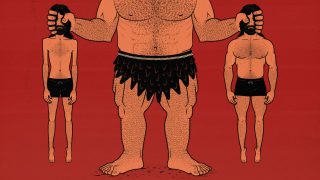
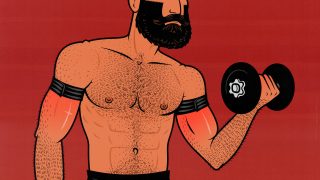

Thanks so much for writing! I appreciate that it is outside of your niche of ectomorph hypertrophy, but I’m still SO pumped for cardio content!!
Idk if this is relevant but here are some other cardio related questions I wonder about that could be more in the niche:
* Is sprinting a form of low weight, explosive lifting? I.e., requiring comparable force to lifting heavy?
* Stretching (e.g., splits) as a means of muscle growth (lengthening)?
* Safe running for lanky people?
My guess is that the answer to the first two is just “sure they can build muscle, but not very efficiently.”
Regardless, since you all are my preferred source for all things fitness, niche or not, I’m so delighted to have this content. Thanks so much!
One other related thing that’s come up for me in PT: how to incorporate running-injury related rehab (or pre-hab) into a lifting routine. Possibly involving things like Copenhagen planks or cross-body RDLs.
I’m not very knowledgeable about rehab and prehab. I can ask Marco about that.
Thank you so much, Aaron!
You’re right about the first question. Sprinting can stimulate muscle growth, but it’s not designed for that, and hypertrophy training is quite a bit better. Sprinters will often lift weights to build bigger muscles, improving their sprinting performance.
Last I heard, the main effect of stretching was a greater pain tolerance while stretching, allowing you to handle more of it. That’s very useful if you’re trying to get better at stretching, but it’s not a very good way to build muscle. Training at long muscle lengths seems to be good for improving mobility and building longer, fuller muscles. I think that will give you the result you’re looking for.
Lanky people are great at running! Look at all the top distance runners. Having a lower body weight and less fat is a great asset when running. You’ve got less weight to carry, less impact on your bones and joints. Many of us are built to run. Plus, we adapt to it quite readily. Many people do 🙂
Interesting read. I was in the Canadian Armed Forces for 15 years as an artillery soldier, part of the combats arms trades, and I actually enjoyed ruck marches (as opposed to mindless jogging, that’s for chumps!) My comment is with regards to the chest/sternum strap. Sure it can help to keep the pack close and tight but what I have personally experienced is that it is used to prevent the shoulder straps from cutting the circulation of blood in the veins near the armpit (or arteries, maybe both, I was a gunner not a medic 😉 so your arms and hands don’t go numb. If you ever get that “arm going to sleep” sensation while rucking, give that chest strap a little tug (ie tighten it) just enough to keep the shoulder straps away from the shoulder joint. You’ll feel immediate results.
Aha! That makes sense. I couldn’t find much information on it. Thank you 🙂
How much were you guys carrying? What was the training like?
Any thoughts on the hip belt?
During garrison training, the rucksack was around 40–45lbs. That’s just the backpack usually done it PT attire without the tac gear like helmet, vest, rifle, etc. and we’d go for an hour, about 6km, once a week. In the field, whatever gets the mission done 🙂
I remember doing a dismounted mortar exercise for a week. We had to strap a piece of the 81mm mortar (they break down into 3 pieces of about 30lbs each) and a pack of 3 mortar rounds to your regular rucksack. That was, literally, on top of everything you were already carrying… fun times! Still better than running though, ha!
I definitely use the hip belt. You can get away without it at lower loads but at some point (weight or duration) the shoulders/traps (perhaps back even lower back for some) wont be able to support the weight and it will be the limiting factor. The hip belt is like this magical device that takes all the weight away from the upper body. There’s no other word for it, it is magic. You have to make sure it’s seated properly on the hip bone to transfer the weight to the lower body.
Oi, yeah, that sounds like it could get rough.
It seems like a lot of military guys love rucking. It’s a form of exercise popularized by guys who learned it in the military. That’s true of GoRuck, the rucksack company, too. But most people who hate rucking seem to be military guys, too. They complain of how overbearing the loads were, how the endless marches beat them up, and how they never managed to recover between sessions, leading to lingering pains.
Seems polarizing among the people forced to do it, which makes sense. All the civilians who do it for exercise, like me, seem to have nothing but good things to say about it. We’re choosing our own loads, going at our own pace, and doing it because we want to.
Heh. Never knew what I was already doing on fossil expeditions was an exercise unto itself. We generally go over a lot of rough terrain on foot with packs filled with tools and water, excavate all day, and walk back with packs now filled with 50~100 lbs of rock (we dump the excess water, but it doesn’t make the pack that much lighter!).
Ah, that sounds awesome! Hard, but great 🙂